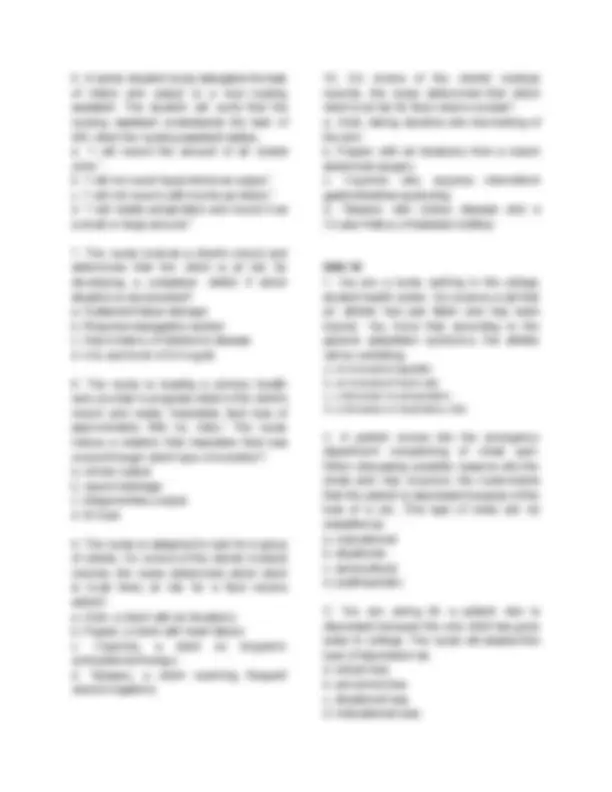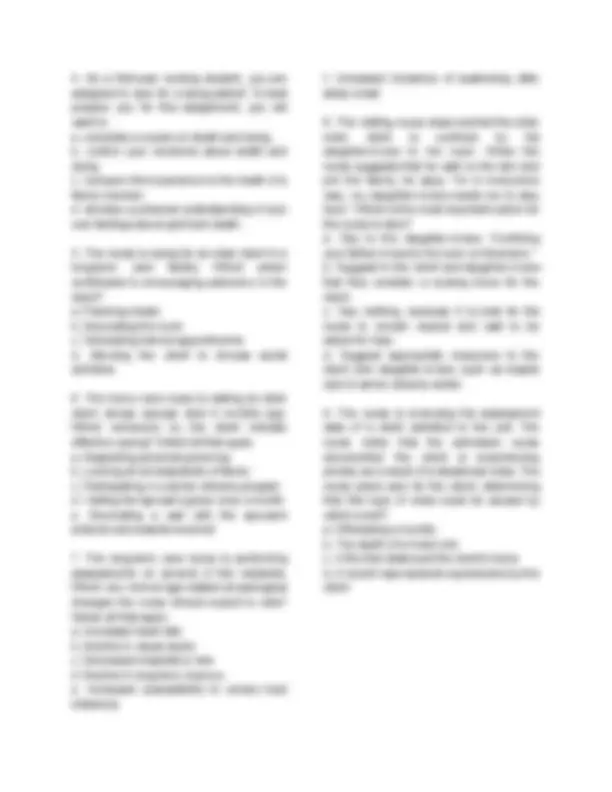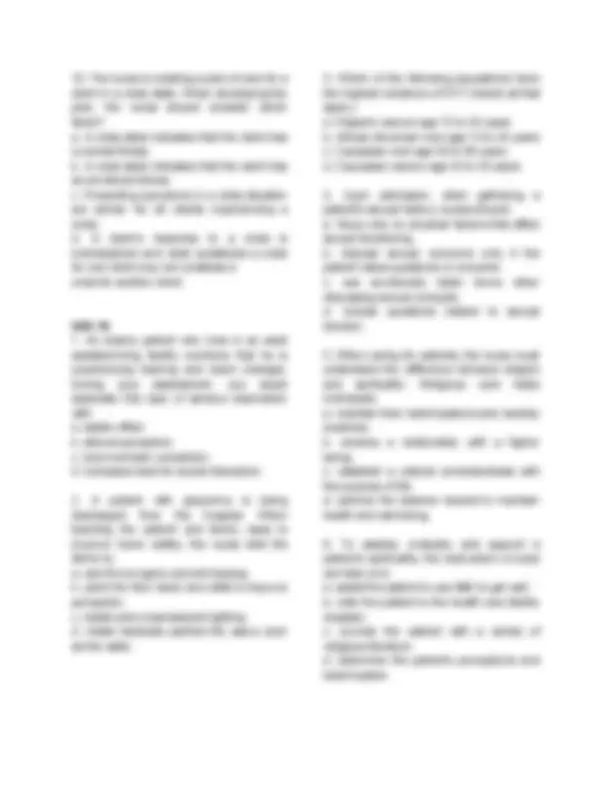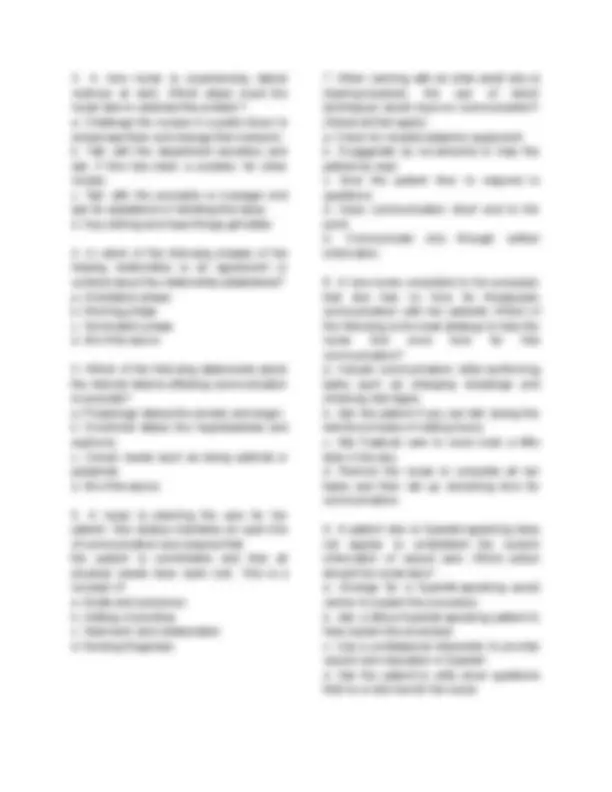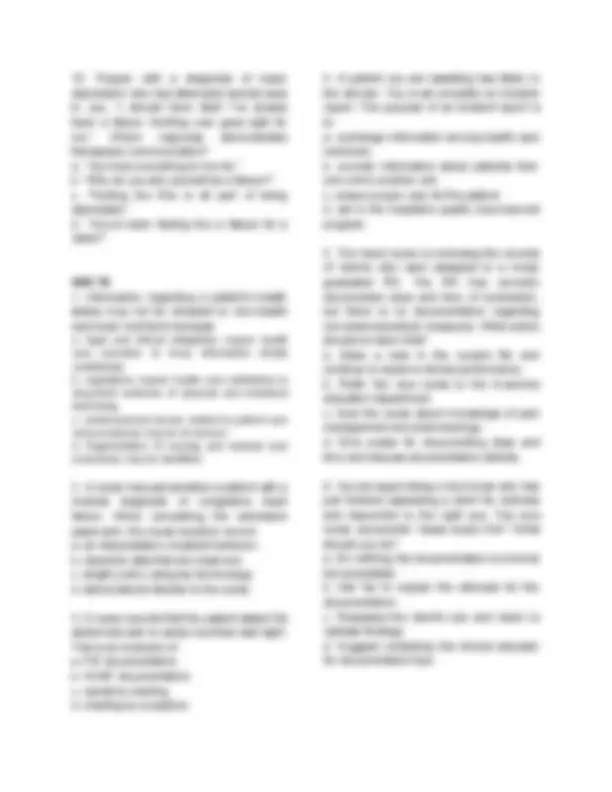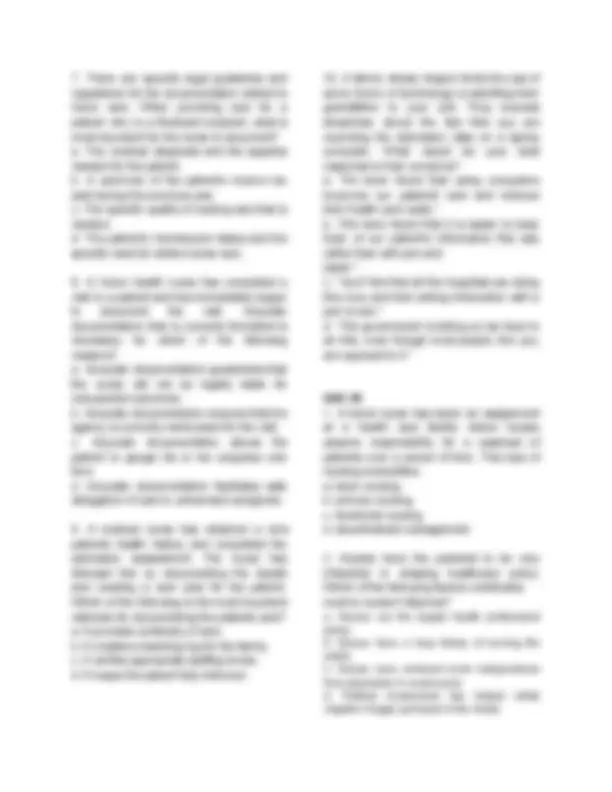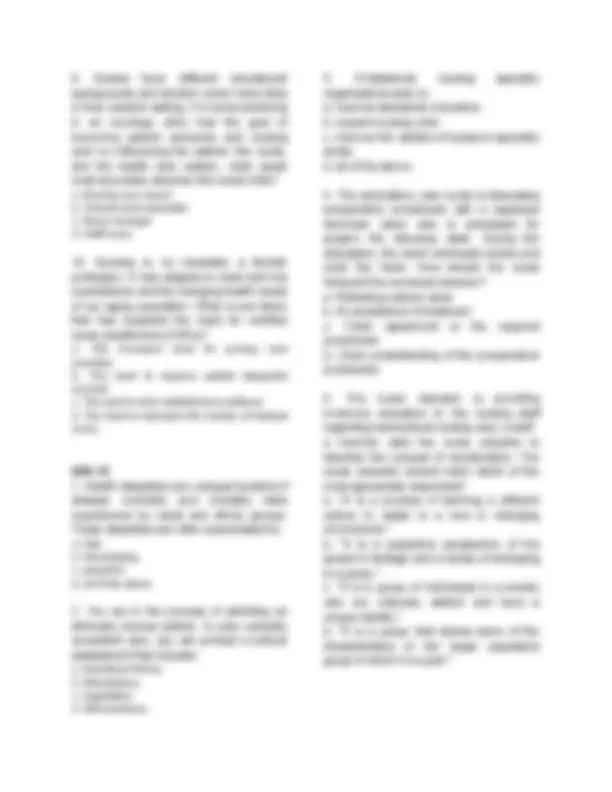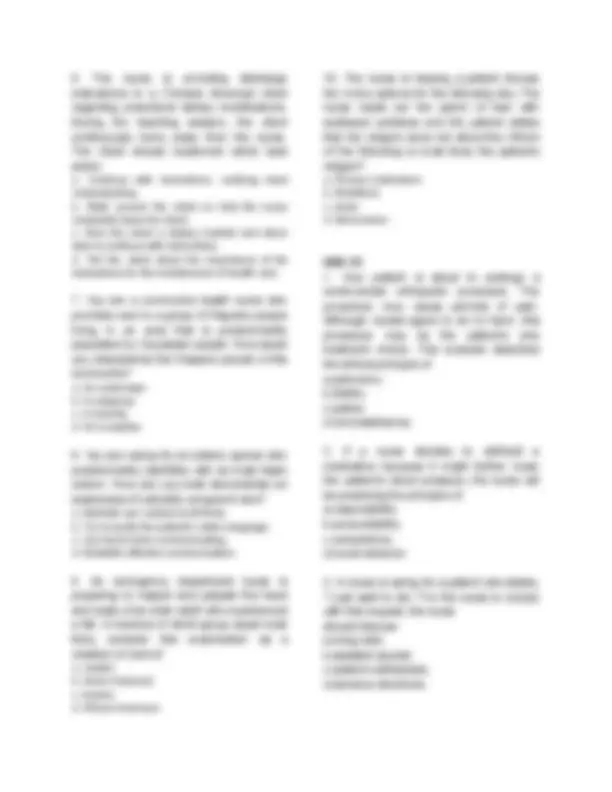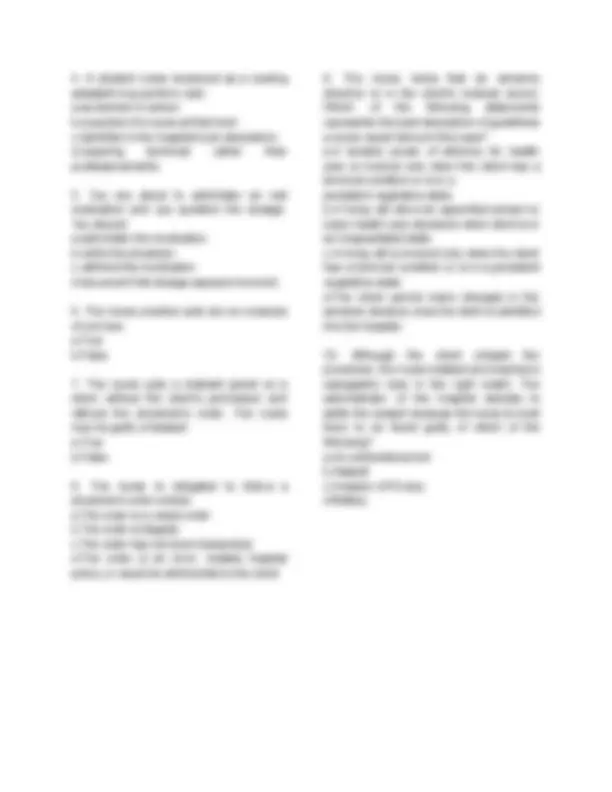NUR 091 - FUNDAMENTALS OF
NURSING PRACTICE (LECTURE)
P2 REVIEWER
SAS 13
1. When a smiling and cooperative patient
complains of discomfort, nurses caring for
this patient often harbor misconceptions
about the patient's pain. Which of the
following is true?
a. Chronic pain is psychological in nature.
b. Patients are the best judges of their pain.
c. Regular use of narcotic analgesics leads
to drug addiction.
d. Amount of pain is reflective of actual
tissue damage
2. A patient who has just undergone a
recommendation would be an
appendectomy. When discussing with the
patient several pain-relief interventions, the
most appropriate
a. adjunctive therapy.
b. non-opioids.
c. NSAIDs.
d. PCA pain management.
3. A postoperative patient is using PCA. You
will evaluate the effectiveness of the
medication when:
a. you compare assessed pain w/baseline
pain.
b. body language is incongruent with reports
of pain relief.
c. family members report that pain has
subsided.
d. vital signs have returned to baseline
4. A 22-year-old new mother is
breastfeeding. You ask her if she is taking
the correct quantities of nutrients. Which
statement reflects that she understands the
dietary guidelines?
a. “I am not concerned with what I am
eating.”
b. “I am taking vitamin doses based on TV.”
c. “I am taking a daily MVI.”
d. “I am making eating choices according to
the recommended dietary allowances.”
5. You receive an order to begin enteral
tube feedings. The first step is to:
a. place the patient in a prone position.
b. irrigate the tube with normal saline.
c. check to see that the tube is properly
placed.
d. introduce a small amount of fluid into the
tube before feeding.
6. A patient with a long-standing history of
diabetes mellitus is voicing concerns about
kidney disease. The patient asks the nurse
where urine is formed in the kidney. The
nurse’s response is the:
a. Bladder.
b. kidney.
c. nephron.
d. ureter.
7. A health care provider may suspect that a
patient is experiencing urinary retention
when the patient has:
a. large amounts of voided cloudy urine.
b. pain in the suprapubic region.
c. spasms and difficulty during urination.
d. small amounts of urine voided two to
three times per hour.

